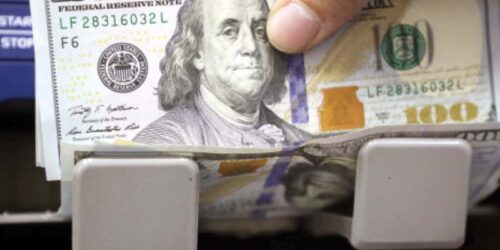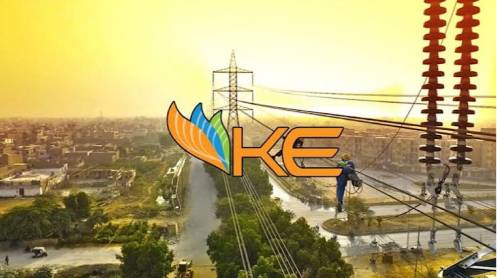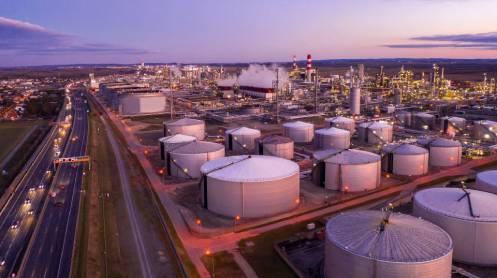The overall business confidence in Pakistan fell to minus four per cent, according to a survey of the Overseas Investors Chambers of Commerce and Industry (OICCI) conducted during September-October 2022.
The business confidence score was low — 17pc — in the previous survey of March-April as well, but it was still positive. The OICCI says the decline in business confidence is not surprising “considering the highly challenging political and economic situation.”
It was in April 2022 that PML-N-led coalition government came into power after toppling Imran Khan’s PTI-led coalition government through a vote of confidence. Since then, the country has remained devoid of political stability and suffered heavily due to PTI’s protests and dramatic political twists and turns.
The change in the military command at the end of November has opened the way for the country to achieve some political stability. But it largely depends on how the PML-N-led coalition and Khan’s PTI behave in the coming days and weeks.
Even the Ministry of Defence has been advised to check forex availability from the Ministry of Finance before importing defence equipment
Meanwhile, macroeconomic indicators of the economy’s health continue to deteriorate. The economy remains engulfed with crises of all sorts: imported onions, ginger, garlic and soybean remain stuck at the Karachi port because forex-starved banks are not retiring their import letters of credit.
Pakistan Railways is not able to finance imports of Chinese coaches also due to short foreign exchange — and even the Ministry of Defence has been advised to check forex availability from the Ministry of Finance before importing defence equipment.
All this makes sense when we look at the State Bank of Pakistan’s (SBP) fast-depleting forex reserves.
At the end of March 2022, the SBP’s reserves stood at $11.425bn, but they gradually tanked to an almost four-year low of $6.715bn on 2nd December. A massive decline of $4.71bn or more than 41pc in a little over eight months — mainly due to external debt payments — has compelled the SBP to restrict all delay-able forex outflows.
External financing gaps are getting wider as non-debt-creating forex inflows remain low. According to the Pakistan Bureau of Statistics, exports during July-November 2022 were down 3.5pc year-on-year to $11.932bn. Although imports shrank 20pc year-on-year during this period, still the import bill totalled $26.338bn.
The resultant trade deficit of $14.406bn remains too big. Home remittances alone cannot adequately compensate. Data for July-November 2022 remittances are yet to be released, but they cannot be expected to exceed $12.4bn. During July-October 2022, remittances totalled $9.9bn, depicting an 8.6pc year-on-year decline.
A massive decline of $4.71bn or more than 41pc in a little over eight months — mainly due to external debt payments — has compelled the SBP to restrict all delayable forex outflows
The government and the central bank are extremely worried about the declining forex reserves. Pakistan has asked Saudi Arabia for immediate $3bn cash support that would be deposited with the SBP to help the country meet external financing requirements in the next quarter.
Efforts are also underway to secure an additional $1.2bn from Riyadh in an oil import facility. The Kingdom recently rolled over a $3bn deposit previously placed with the SBP. Authorities hope that Saudi Arabia will also accept Islamabad’s request for $3bn cash deposits and another $1.2bn oil payment facility.
Pakistan has sought even larger debt rollovers from China, and the government hopes Beijing will not disappoint. The International Monetary Fund (IMF) is yet to conduct the ninth review of Pakistan’s economy before releasing the next tranche of $1.2bn. It is yet to be seen how soon China and Saudi Arabia will respond to Pakistan’s request and when exactly the IMF will begin the economy’s review.
Our forex reserves are too low — equal to just five weeks of merchandise imports — and external debt servicing requirements for January-March 2022 are too high ($8.8bn, according to credible media reports). Any delay in the expected inflows from Saudi Arabia and China may deepen the forex crisis.
Similarly, the exact time lag between now and the release of the next IMF tranche would determine how long negative perceptions about Pakistan’s economy may persist, how long, even necessary imports may remain hampered and how much more value the rupee will shed.
Since the beginning of April 2022, the rupee has lost more than 22pc value against the US dollar. At the end of March, the rupee stood at 183.48 to $1. On 9th December 2022, it closed at 224.40.
Importers and all others who need foreign exchange from banks complain that banks demand much higher prices for the dollar than the ones reported by the central bank at the day’s end (as mark-to-market revaluation exchange rates).
Some difference is natural as these rates represent the average daily buying/selling rates of banks. But big differences mean banks are overcharging customers. Moreover, the central bank is already investigating more than eight banks for their alleged involvement in exchange rate manipulation and other violations of forex rules.
SBP Governor Jameel Ahmed said in his 8th December podcast that less than 10pc of the country’s imports are currently subject to administrative controls. “All such restrictions are temporary and will be withdrawn gradually,” he reassured.https://www.dawn.com/news/card/1725421
What will happen to forex markets after import restrictions are withdrawn cannot be predicted. But since external financing gaps are too large and our non-debt-creating forex inflows continue to fall, one must not hope for any “large and sustainable gain” in the rupee’s value in the next quarter — or even till of the end of this fiscal year in June. (This fiscal year’s gap, according to the SBP chief, is $33bn).
At the root of our continued external borrowing is the ever-growing fiscal deficit problem. As a nation, particularly our “ruling elite”, we must learn to live within our means and become economically more productive and efficient.
That is the way forward for the country to grow. External debt rollovers and placement of the dollar deposits into SBP account from “friendly countries” come at a heavy price, both financial and otherwise.
Published in Dawn, The Business and Finance Weekly, December 12th, 2022Now you can follow Dawn Business on Twitter, LinkedIn, Instagram and Facebook for insights on business, finance and tech from Pakistan and across the world.





